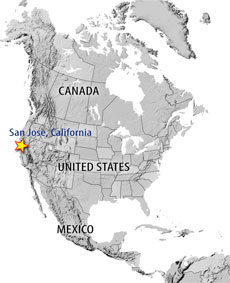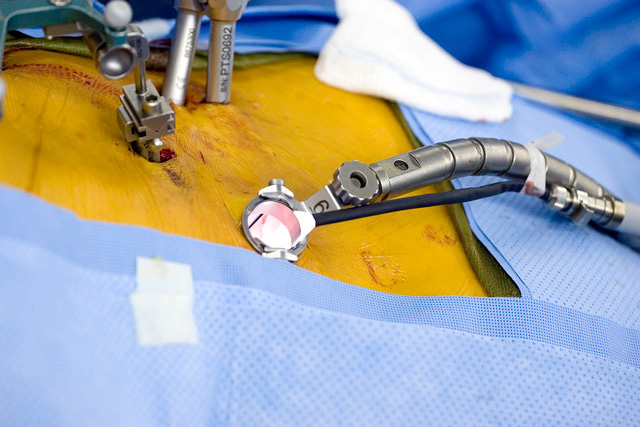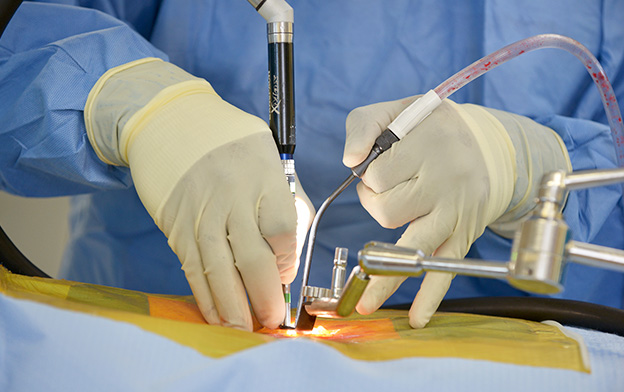The problem with spine care in Canada
What happens to spine outcomes when the queue is a year-long wait for assessment?
Socialized medicine has its advocates. Patients pay for healthcare with taxes rather than their own wallet. But when you have a back attack, and pain and numbness in an arm or leg, the issue becomes clearer: You get what you pay for.
There are five main obstacles and barriers for spine care for back pain and neck pain patients in Canada, and specifically in larger metro markets like Calgary, Edmonton, Winnipeg, Vancouver, Toronto, Montreal and Ottawa which have 1 to 5 million in population.
The Five Main Obstacles
1) Long Waits for Primary & Specialty Care
First, because of the large population in those Canadian cities, there can be a longer queue to get access to the primary care doctor, and then a longer queue to access the spine surgeon for an assessment and then another third queue to get the surgery performed in a Canadian hospital.
2) Referral Needed from Primary Care Physician
Secondly, the primary care doctor — who understandably can have limited expertise in diagnosing complex back and neck problems, stenosis, disc herniations or scoliosis — has to view the person as a potential surgical problem to even put them into the queue to see a spine surgeon specialist. You cannot access the surgeon by yourself. If you successfully make it into that long queue to see a spine surgeon, the waiting time to see a spine surgeon — according to some Canadian healthcare web sites — can take up to 24 months. (https://caleohealth.ca/spine-assessment-information/)
Some patients can be expedited if the spine surgeon receives a report from the primary care doctor that the patient is an urgent surgical matter.
3) Majority of Referred Cases are Non-Surgical
The third obstacle to accessing spine surgery is that — according to several province web sites —80% of patients referred directly to a surgeon by their family physician are deemed to be non-surgical by the spine surgeon. Because the spine surgeon in a socialized medicine setting has less incentive to do surgery, cases that might get prompt surgical resolution and pain relief in the U.S. can linger for years in Canada, affecting the quality of life for the patients with spine problems in Canada. The result is a significant delay in access to spine care for patients that are surgical.
Because numbness in a leg or arm is a common symptom of disc herniation, delaying surgery can cause the numbness (also known as foot drop) to become permanent and lifelong.
For example, a spine surgeon has the right to decline direct referrals to manage their waitlists, especially if they feel the written referral doesn’t sound like a surgical patient or surgical emergency.
4) Less Incentive to Learn Advanced Surgical Techniques
Similarly, there is often little incentive for the surgeon to do the extra training to be able to use endoscopic instruments with cameras in the tip so surgery can be done through a half-inch incision rather than simply making a long 3-inch incision. Same issue applies to the additional training to learn how to implant an artificial disc in the neck or back to preserve the natural motion of the spine and lessen the risk of other disc herniations.
5) Spine Surgeons Leaving Canada
The final problem of spine care in Canada is that many of the best spine surgeons see a financial benefit in leave Canada to practice in the United States where their personal income will go up dramatically, and they will be doing surgery in more advanced spine hospitals with better access to the most advanced surgical instrumentation and artificial discs. This can lessen the supply of specialists to see the increasing number of back and neck patients in Canada.
The Solution?
The good news is that patients can cross the Canadian border to the U.S. to access the most advanced spine care in the world. The question becomes one of how much a person values their health and activity and the relief of pain symptoms and prevention of lifelong problems.
The Fraser Institute noted in its 2022 annual report on medical treatment wait times in Canada noted that if you suffer from a spine problem, the wait time from general practitioner referral to treatment with a neurosurgeon is 71 weeks in British Columbia and 48 weeks in Alberta. For an orthopedic spine surgeon, you might wait 61 weeks in Alberta and 42 weeks in British Colombia. In British Columbia province, for the last quarter of 2022, 1,840 spinal and back cases were waiting for surgery. These numbers do not include the wait time to see a specialist, only treatment after seeing the specialist. In Alberta, 90% of patients wait 50.1 weeks to complete spine surgery.
By comparison, in the United States a person typically can see a spine surgeon in about two weeks, and sooner with emergency symptoms like numbness or footdrop.
According to the Ontario Health Technology Assessment, each year about 1,000 patients in the province of Ontario would qualify for cervical artificial disc replacement. While reports in Canada document that artificial disc replacement makes sense for outcomes and even on a financial basis, there are issues noted previously about access to the technology and the surgeons trained to perform the surgery.
Why choose San Jose Neurospine for Minimally Invasive Spine Surgery?
- 1/2 inch incision
- Board Certified Neurosurgeon
- More than 2000 successful cases
- Same day discharge
- Northwestern/UCLA Trained
- Minimal post-op pain
- Quick Recovery
- Over 90 percent success rate
- Advanced Technology
Here at San Jose Neurospine, as a result of our international reputation, we treat patients from all over the world. Our practice is conveniently located close to both San Francisco International airport and  San Jose International airport. The San Francisco bay area has some of the nation’s finest hotels. If required our staff can help arrange hotel accommodation as well as airport pickup. We also provide translation services to patients who speak little to no English.
San Jose International airport. The San Francisco bay area has some of the nation’s finest hotels. If required our staff can help arrange hotel accommodation as well as airport pickup. We also provide translation services to patients who speak little to no English.
Our “Virtual Consultation” program enables us to assess your clinical problem weeks before your visit. All you have to do is send in our imaging (CT, MRI and X-Ray) studies and reports as well as provide a brief medical history. We will then carefully review this information and contact you with our recommendations. For many of our out of town patients, the preoperative clearance evaluation is performed by a primary care physician in their home city. Our clinic will provide you with the details of all the required information and the necessary preoperative tests.
Patient Testimonial – Minimally Invasive Spine Surgery
Colleen first noticed something was wrong when she experienced tingling and numbness in her leg while on vacation in Vancouver and continuously had to stop and rest, hindering her trip. As time went on, her leg became more painful, so painful that she had to carry a folding stool with her at all times so she could sit down and rest her leg. An MRI determined it was her lower back that was causing her leg pain.
After injections and pain creams were unsuccessful, Colleen visited San Jose Neurospine where Dr. Onibokun performed a Minimally Invasive procedure to alleviate her back pain. Colleen is now back to a pain free life.
Watch Colleen's emotional story...



